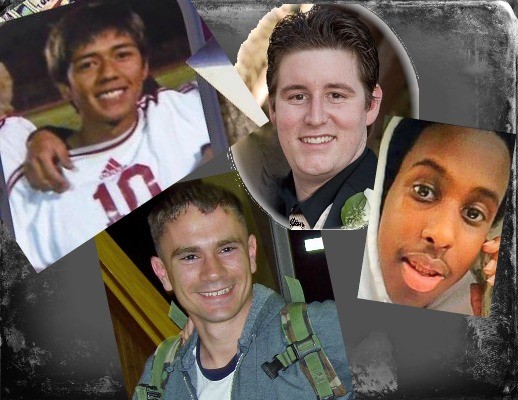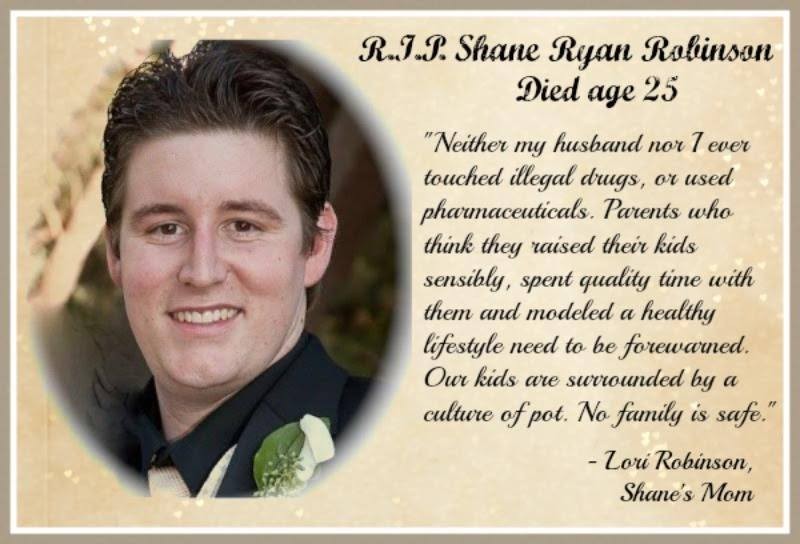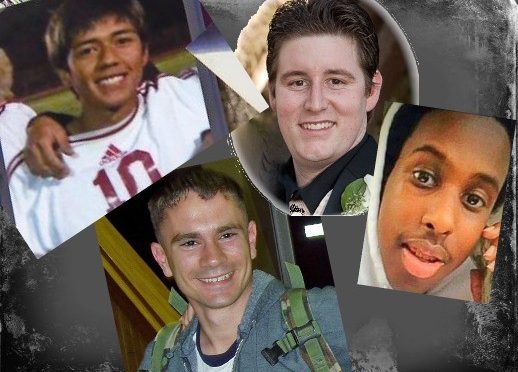The common element in all these suicides or self-inflicted deaths was marijuana. Marijuana was the factor, not alcohol or other drugs…………in all cases. (Read Part 1 and Part 2)
Marc Bullard, 23 Colorado
Brant Clark, 17 Colorado
Tron Dohse, 26 Colorado
Luke Goodman, 23 Colorado, traveling from Oklahoma
Daniel Juarez, 18 Colorado
Shane Robinson, 25 California
Rashaan Salaam, 41 Colorado
Levy Thamba, 19 Colorado, traveling from Wyoming
Hamza Warsame, 16 Washington
Andy Zorn, 31 Arizona

Four of these victims — Warsame, Thamba, Juarez, Clark — had experienced pot-induced psychosis during the period leading to their deaths. Juarez was an outstanding soccer player who got very high with a friend the night he stabbed himself 20 times. The suicide report showed he had 38.2 ng of marijuana in his blood, eight times the limit for Colorado drivers. Toxicologists tested him for methamphetamine and other substances, but the results turned out to be negative. Although the death occurred in 2012, CBS News obtained the police report in 2015 and made it public at that time. Juarez´s sister claims he would not have killed himself had he not gotten stoned that night.
Suicidal thoughts can come on very quickly while under the influence in individuals who were not previously suicidal. The suddenness of suicidal ideation means that intervention may be impossible.
Dohse’s death was determined to have been an accident. Unable to find his keys, Dohse climbed up the apartment building and fell. The toxicology report 27.3 ng. of marijuana in his blood, but no other drugs or alcohol in his system. As his sister told CBS, she believes marijuana impairment led her brother to make poor decisions the night of his death. (Read Part 1 for more background on Warsame, Dohse, Juarez and Clark)

The story of Levy Thamba is particularly tragic since he was on a student visa to this country. He came from the Democratic Republic of Congo to study engineering in Wyoming. While visiting Denver with friends, he tried a marijuana edible for the first time. It was a pot-infused cookie, the effects of which don´t appear immediately. About two hours later, he became acutely psychotic, thinking pictures were jumping off the wall. The friends calmed him down before going to sleep, but his psychosis returned. He ran from his room to the sixth floor balcony, jumping to his death.
Thamba’s death is often described along with the death of Kristine Kirk. She called 911 because her husband, Richard Kirk, wanted her to shoot him, after he ate a marijuana candy. By the time, help came, he shot Kristine, mother of their three children, instead.
Bullard, Salaam and Robinson appear to have been suffering from depression as a result of heavy and/or extended pot use. Marc Bullard was “dabbing.” Andy Zorn, a veteran who had been taking medical marijuana, knew he had to quit marijuana to survive. But he couldn’t quit and so took his own life. (Many people begin smoking pot after being told “it’s not addictive.”)
Marijuana Withdrawal is a Risk, Too
Although Shane Robinson had experienced two periods of pot-induced psychosis, he was having marijuana withdrawal syndrome at the time of his death. According to a program of Dr. Drew Pinsky back in 2003, there is “an extraordinarily high incident of suicide in the first six months of marijuana abstinence.”
Most striking about the youths we describe is that they did not begin pot use because of depression. All of these deaths occurred in marijuana-friendly states where the social situation was an influence on their pot use. Lori Robinson, Shane’s mother, warns that educating against drugs and modelling a healthy lifestyle without drug use doesn’t work today. It is no match for current cultural trends and government policy which normalizes pot use.
Most who die in marijuana-related suicides are male, but women and girls are still at risk. One of our supporters attempted suicide in her 20s after years of daily pot use, failed relationships and domestic violence. Her attempt was not successful. Today she is 29 years sober and her survival is a blessing. Not all people will be as lucky. Males are generally more successful in suicide attempts, because their methods are often more efficient.
Pot is the Common Element, not an Underlying Mental Health Issue
 These youths banish the claim that mental health problems always come before the marijuana use. (A strong misconception is that mental illness after using pot only affects those with previous mental health issues.) The deaths described here include active psychotic reactions at the time of marijuana use, as well as depression from long-term use.
These youths banish the claim that mental health problems always come before the marijuana use. (A strong misconception is that mental illness after using pot only affects those with previous mental health issues.) The deaths described here include active psychotic reactions at the time of marijuana use, as well as depression from long-term use.
The lives of these young men need to be a warning to states trying to legalize marijuana. Suicide rates in Colorado have reached all-time highs and each one of Colorado’s 21 health regions had a suicide rate higher than the national average, according to a February report by the Colorado Health Institute.
When the pot industry tells us that “no one ever died from marijuana,” they’re lying. Maybe it is time for the CDC to start tracking marijuana-related deaths.
These 10 deaths are just a few of the many self-inflicted deaths related to marijuana use. Lori Robinson has assembled more stories of marijuana-related deaths and psychosis on the website of Moms Strong. Read these stories on momsstrong.org.




